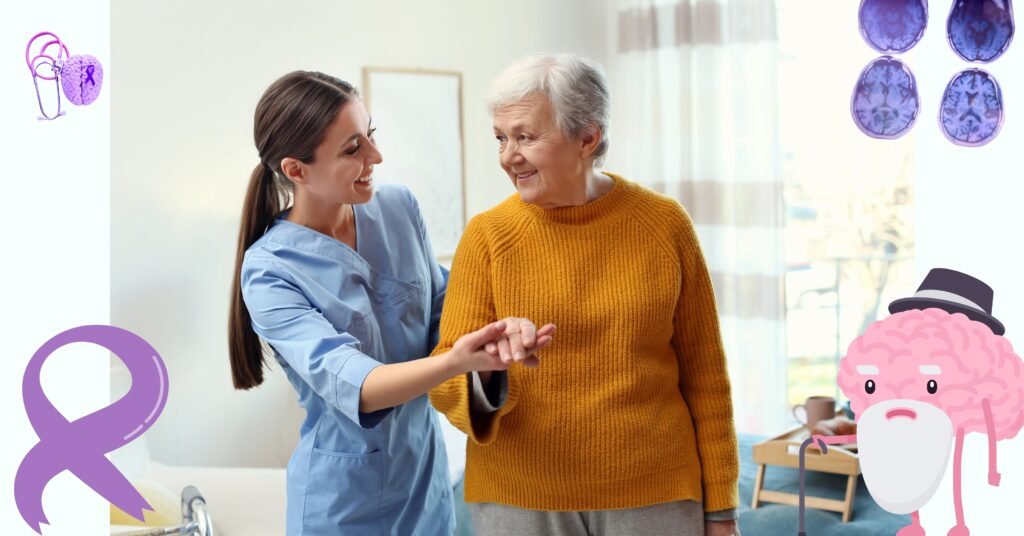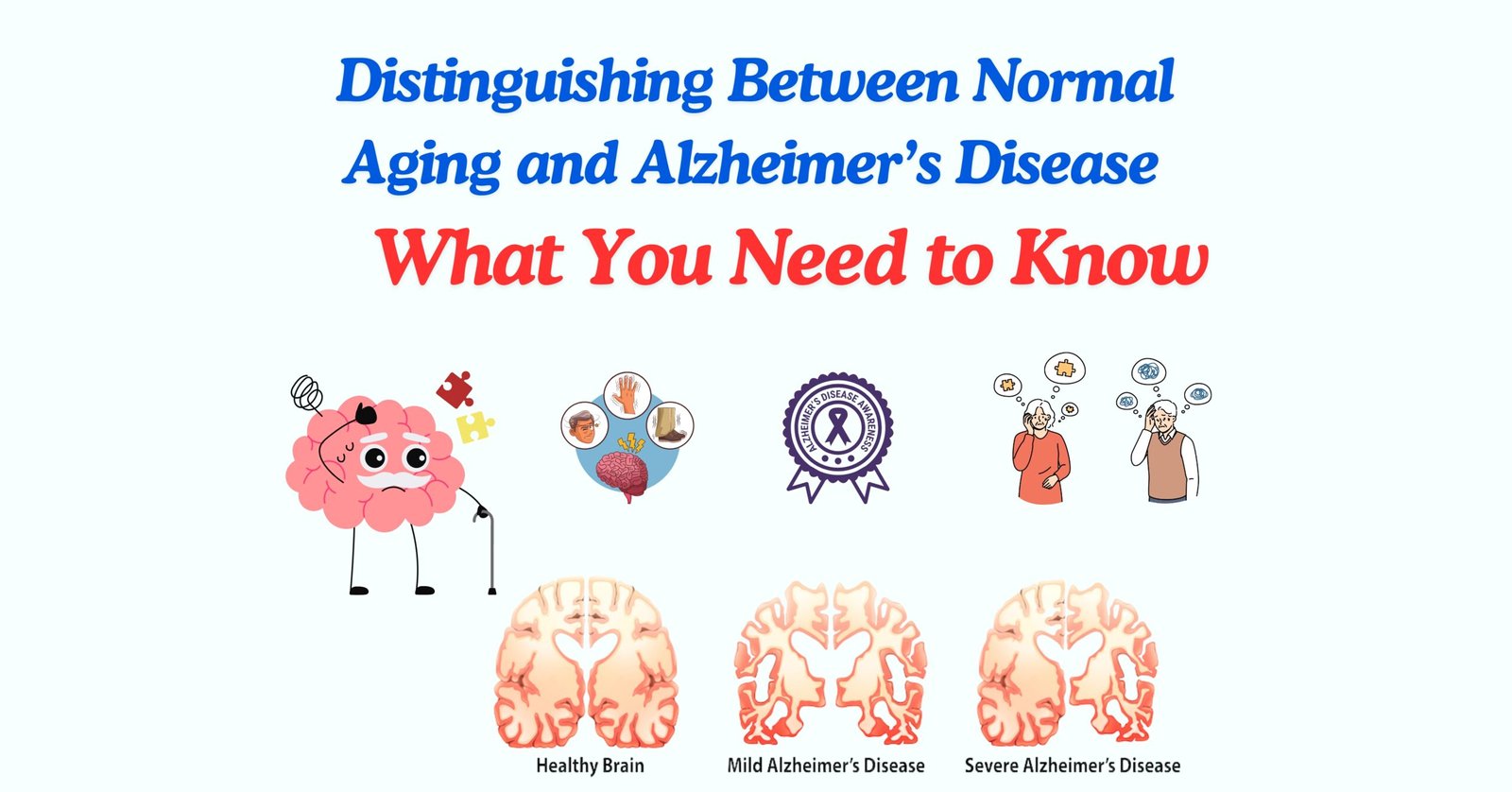As we grow older, changes in memory and thinking abilities are a normal part of aging. It’s common to occasionally forget a name or misplace your keys, and these moments can cause concern, especially with the increasing awareness of Alzheimer’s disease. But how do you know whether these changes are just part of normal aging or something more serious like Alzheimer’s? Understanding the differences is crucial for early intervention and effective management, especially in countries like Pakistan, where resources for Alzheimer’s care are limited, and awareness remains low.
Normal Aging:
As we age, certain cognitive changes are to be expected. These changes usually involve slower processing speeds and occasional lapses in memory. For example, you might take longer to recall a name or forget where you put something, but with a little time, the memory usually comes back. It’s also normal to occasionally struggle with finding the right word or to need more time to learn new information. These changes are generally mild and do not interfere significantly with daily life or the ability to live independently.
The brain, like the rest of the body, goes through natural wear and tear over time. Neurons might not communicate as efficiently as they once did, and certain cognitive functions, like processing speed and attention, may decline slightly. However, these changes are gradual and typically do not disrupt everyday activities or the ability to function socially and professionally.

Alzheimer’s Disease:
Alzheimer’s disease, on the other hand, is a serious and progressive neurodegenerative disorder that goes beyond the normal aging process. It affects memory, thinking, and behavior in a way that eventually interferes with daily life. Unlike normal aging, where memory lapses are infrequent and minor, Alzheimer’s leads to significant memory loss, particularly in recent memories. A person with Alzheimer’s might forget important dates, repeatedly ask the same questions, or get lost in familiar places.
The distinction between normal aging and Alzheimer’s becomes clear when considering the severity and progression of symptoms. Alzheimer’s starts with mild memory loss but gradually worsens over time. People with Alzheimer’s may struggle to follow conversations, lose track of time, or have difficulty performing routine tasks, such as managing finances or keeping track of medications. As the disease progresses, they may even forget the names of close family members or become disoriented in familiar environments.
One of the hallmark features of Alzheimer’s is the presence of amyloid plaques and neurofibrillary tangles in the brain. These abnormal structures disrupt communication between neurons and lead to the death of brain cells, causing the brain to shrink over time. This process is different from the normal aging brain, where such extensive damage is not observed.
Understanding the Impact in Pakistan
In Pakistan, where awareness about Alzheimer’s is limited, distinguishing between normal aging and Alzheimer’s can be challenging. Many people assume that memory loss and confusion are just a normal part of getting older, which leads to delayed diagnoses and a lack of proper care. Cultural factors also play a role, as mental health issues often carry a stigma, making families reluctant to seek help.
The economic burden of Alzheimer’s in Pakistan is significant. With healthcare resources already stretched thin, families often bear the full cost of care. In many cases, a family member—usually a woman—becomes the primary caregiver, facing enormous emotional and financial pressures. Studies suggest that caregivers of Alzheimer’s patients in Pakistan experience high levels of stress and burnout, yet they receive little to no support from formal health systems.
Additionally, in a country where the public health infrastructure is underdeveloped, and specialized care facilities are scarce, people with Alzheimer’s often do not receive the treatment they need. The lack of trained healthcare professionals, limited access to medications, and minimal public health campaigns further exacerbate the situation, leaving many families to navigate the complexities of Alzheimer’s on their own.
What Can Be Done?
Addressing Alzheimer’s in Pakistan requires a multi-faceted approach that includes raising awareness, improving access to care, and supporting research. Public health campaigns can help educate communities about the differences between normal aging and Alzheimer’s, encouraging earlier diagnoses and reducing stigma. It’s also essential to provide better training for healthcare providers so they can recognize the symptoms of Alzheimer’s and offer appropriate care.
In addition, Pakistan needs to invest in healthcare infrastructure, particularly in the areas of mental health and elderly care. Establishing memory clinics, offering respite care for caregivers, and increasing the availability of affordable medications are critical steps. Support groups and community-based programs can also play a significant role in providing emotional and practical support to both patients and their families.
Furthermore, research into Alzheimer’s, particularly in the context of low- and middle-income countries like Pakistan, is crucial. Understanding how Alzheimer’s manifests in different populations and identifying risk factors specific to Pakistan can lead to more effective prevention and treatment strategies.
References:
- Alzheimer’s Disease International. (2019). World Alzheimer Report 2019: Attitudes to dementia. Retrieved from https://www.alzint.org/
- World Health Organization. (2018). Dementia. Retrieved from https://www.who.int/news-room/fact-sheets/detail/dementia
- Qureshi, H., & Jawaid, A. (2020). Alzheimer’s disease in Pakistan: A growing challenge. Pakistan Journal of Neurological Sciences, 15(1), 1-5. https://doi.org/10.1007/s12031-020-01487-w
- Siddiqi, A., & Kausar, R. (2019). Caregiving burden in dementia: Insights from Pakistan. Aging & Mental Health, 23(3), 319-324. https://doi.org/10.1080/13607863.2017.1423035
- Ali, A., & Bhatti, Z. (2017). Alzheimer’s disease: Current research and future perspectives in Pakistan. Journal of the College of Physicians and Surgeons Pakistan, 27(11), 720-724.


